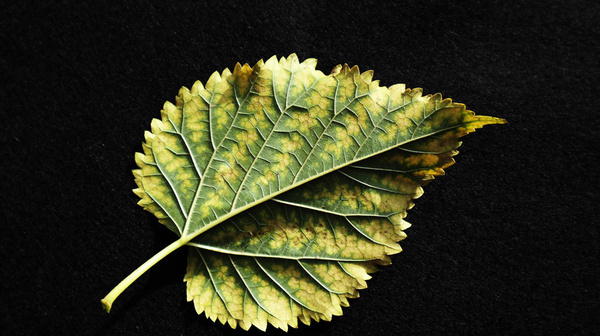
Are Your Plant’s Leaves Turning Yellow?
Rich green leaves indicate a thriving, healthy plant. Yellowing leaves may indicate chlorosis, a condition usually treated by adding micronutrients or decreasing the pH level of soil. Though rarely fatal, this condition requires treatment to prevent it from progressing.
A major part of a plant’s natural beauty is its vibrant green leaves. The rich color is an indication of health, and discoloration can be a warning sign that something is wrong.
Chlorosis is a yellowing of the leaves caused by a lack of chlorophyll. If you see yellow leaves on any of your plants, this post will answer the basics of what may be going on and what to do about it.
Identifying Chlorosis
The distinct symptoms of chlorosis make it pretty simple to identify once you know what to look for. The tissue of affected leaves will begin yellowing, but the veins stay green. This makes the veins appear more prominent as you look at the leaf. As the condition progresses, foliage can brown or die, and fruit and flower growth may be stunted.
Not all leaves or branches have to turn yellow for a plant to be affected by chlorosis. The first yellowing will begin on outer leaves and gradually extend back down the branch toward the heart of the plant.
Causes
A lack of micronutrients, often iron or manganese, causes chlorosis. Plants require these nutrients to create chlorophyll, which is the green leaf pigment.
A common obstacle to plants receiving iron is high pH levels in the soil. Alkalinity (high pH) of many soils obstructs a plant’s natural ability to absorb the nutrients that are present. So, even if the nutrients are in the soil, they’re not transferred to the plant.
Less common causes are damaged root systems that similarly prevent the plant from absorbing nutrients. Rototillers, standing water, or compacted roots may be the culprit.
Treatment
As always, conduct a soil test before altering its contents. The two pieces of information to look for are the soil’s pH level and the presence of micronutrients.
For example, treat low iron in the soil with chelated iron compounds. If the pH is high, use ammonium sulfate or sulfur to bring it down to a healthy level for the plants. If the soil test reveals a suitable soil pH and presence of micronutrients, assess for possible root damage and treat accordingly.
Prevention
Q: What’s even better than restoring a chlorotic plant to health?
A: Not getting chlorosis in the first place!
Though this is obvious, how to prevent chlorosis on your property might not be as clear. Here are some down-and-dirty tips:
1. Choose shrubs and plants that are less susceptible to chlorosis and reduce the chances of having to address it.
2. Ensure trees and shrubs are getting about one inch of water per week to aid their ability to absorb micronutrients.
3. Mulch around plants to at least to the drip line—this helps keep those roots moist. (To find the drip line, draw an imaginary line around the plant directly under the outermost leaves.) 4. Watch for chlorotic signs, particularly in more susceptible plants. Conduct a soil test and treat quickly and appropriately before chlorosis progresses.